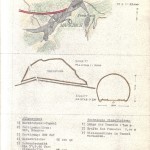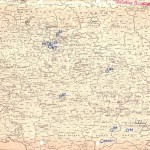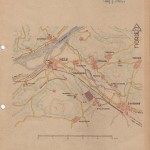Not that I really have time to blog as I do it, but… I feel like I need to do something historical here… So why not.

So this is my last class before embarking on my dissertation. The Graduate Research Seminar should hopefully tie up any loose knots in our historical writing abilities. It’s a course on honing our skills. The syllabus looks great, and I’m excited for the class. One initial question I had was, why are we learning how to write like historians until the very end? Why don’t we learn how to write at the beginning or even in the middle? Well, there is a course or two on that, but nothing like this one proposes to be. We’re apparently going to learn all the behind-the-scene techniques and tricks to the trade. I’m actually really excited for it. Our Professor is great.
So for this class we’re supposed to write a 25-30 page paper that will hopefully become a chapter (or at least a bulk of one) of the dissertation. If nothing else, it can be a publishable paper. On the very low end, it will at least teach us something we don’t want to do for a dissertation.

My dissertation, as it stands now, is on Nazi Tunnels. The Nazis, towards the middle of the war, decided that they needed to move much of their war manufacturing underground. So they designed and built huge underground bunkers and tunnel systems for factories and depots. Go ahead, google it. There’s not much out there. Add the keywords, ‘melk ebensee’ and you’ll get a few more responses. The only scholarly works that I know of on this topic are two German books. One is an excellent work by Hans Walter Wichert, Decknamenverzeichnis deutscher unterirdischer Bauten(at Amazon, already have one), which lists practically all of the underground building sites during Nazi Germany. The second work is a dissertation by Bertrand Perz, Projekt Quarz: Steyr-Daimler-Puch Und Das Konzentrationslager Melk, Industrie, Zwangsarbeit und Konzentrationslager in O?sterreich (at Amazon if anyone wants to buy it for me), which is an in-depth look at one of these underground projects in Melk, Australia.
Anyhow, there are totally no sources available, to my knowledge, that I can use for the current project. That’s part of my dissertation work, is to dig up all of those sources. It should be fun. It’s also not manageable in a semester’s time. So for this semester’s project I had several ideas.

First, I thought about doing a micro-study on just one of the tunnels. Unfortunately, in the two or three hours of looking for sources, I couldn’t find any. I haven’t checked with the library, yet, but I’m not hopeful. So my second idea is to look at a more broad topic that touches the issue of the tunnels. One obvious one is, why did they build them in the first place (the answer is to protect them from Allied bombings). But a deeper question begs, why did they think they could do that in the first place. It was a huge undertaking to move so many factories underground. They must have though they could do it. So a deeper question would be, why did the Nazi’s think they could undertake such a big job. Now let’s step back a bit, say, 30-50 years, and apply this question to Germany as a whole in the form of, what did German’s think of their technical and scientific abilities? So that will be my basis of inquiry for this semester’s project. I will look at what German citizens, German scientists, and German politicians thought about German science and technology from 1900 until the end of World War II. I post more on this as I think it through and find sources.
So, basically, I’m hoping to keep up the blog as I write the paper and take the class. I’ll post the methodology that I learn, and the troubles and trials, the triumphs and tackles about writing a historical paper.
First off, I feel completely unprepared because I have no sources. That’s the first thing to tackle.